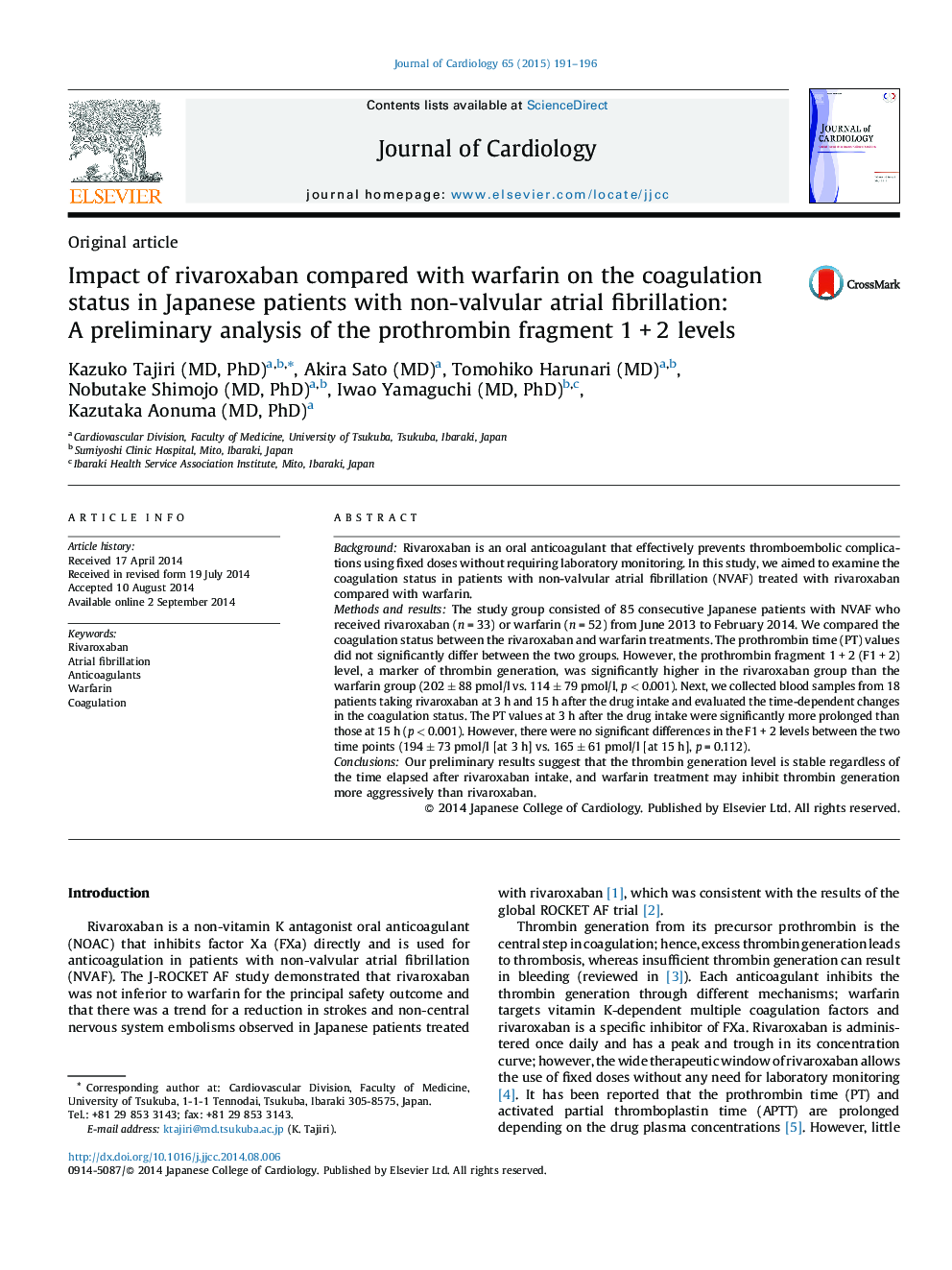| Article ID | Journal | Published Year | Pages | File Type |
|---|---|---|---|---|
| 5983954 | Journal of Cardiology | 2015 | 6 Pages |
BackgroundRivaroxaban is an oral anticoagulant that effectively prevents thromboembolic complications using fixed doses without requiring laboratory monitoring. In this study, we aimed to examine the coagulation status in patients with non-valvular atrial fibrillation (NVAF) treated with rivaroxaban compared with warfarin.Methods and resultsThe study group consisted of 85 consecutive Japanese patients with NVAF who received rivaroxaban (n = 33) or warfarin (n = 52) from June 2013 to February 2014. We compared the coagulation status between the rivaroxaban and warfarin treatments. The prothrombin time (PT) values did not significantly differ between the two groups. However, the prothrombin fragment 1 + 2 (F1 + 2) level, a marker of thrombin generation, was significantly higher in the rivaroxaban group than the warfarin group (202 ± 88 pmol/l vs. 114 ± 79 pmol/l, p < 0.001). Next, we collected blood samples from 18 patients taking rivaroxaban at 3 h and 15 h after the drug intake and evaluated the time-dependent changes in the coagulation status. The PT values at 3 h after the drug intake were significantly more prolonged than those at 15 h (p < 0.001). However, there were no significant differences in the F1 + 2 levels between the two time points (194 ± 73 pmol/l [at 3 h] vs. 165 ± 61 pmol/l [at 15 h], p = 0.112).ConclusionsOur preliminary results suggest that the thrombin generation level is stable regardless of the time elapsed after rivaroxaban intake, and warfarin treatment may inhibit thrombin generation more aggressively than rivaroxaban.
